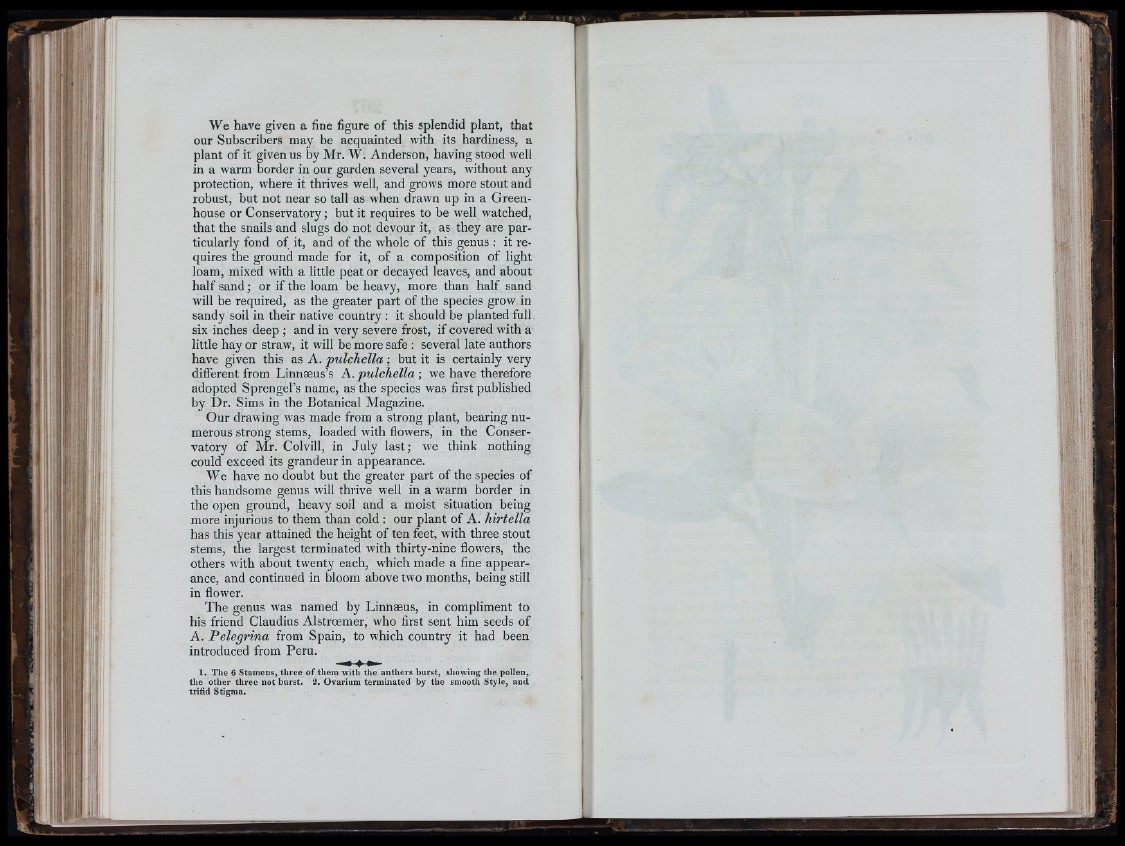
We have given a fine figure of this splendid plant, that
our Subscribers may be acquainted with its hardiness, a
plant of it given us by Mr. W. Anderson, having stood well
in a warm border in our garden several years, without any
protection, where it thrives well, and grows more stout and
robust, but not near so tall as when drawn up in a Greenhouse
or Conservatory; but it requires to be well watched,
that the snails and slugs do not devour it, as they are particularly
fond of it, and of the whole of this genus : it requires
the ground made for it, of a composition of light
loam, mixed with a little peat or decayed leaves, and about
half sand; or if the loam be heavy, more than half sand
will be required, as the greater part of the species grow in
sandy soil in their native country : it should be planted full
six inches deep ; and in very severe frost, if covered with a
little hay or straw, it will be more safe : several late authors
have given this as A. pulchella ; but it is certainly very
different from Linnaeus’s A. pulchella; we have therefore
adopted Sprengel’s name, as the species was first published
by Dr. Sims in the Botanical Magazine.
Our drawing was made from a strong plant, bearing numerous
strong stems, loaded with flowers, in the Conservatory
of Mr. Colvill, in July last; we think nothing
could exceed its grandeur in appearance.
We have no doubt but the greater part of the species of
this handsome genus will thrive well in a warm border in
the open ground, heavy soil and a moist situation being
more injurious to them than cold : our plant of A. hirtella
has this year attained the height of ten feet, with three stout
stems, the largest terminated with thirty-nine flowers, the
others wdth about twenty each, which made a fine appearance,
and continued in bloom above two months, being still
in flower.
The genus was named by Linnaeus, in compliment to
his friend Claudius Alstroemer, who first sent him seeds of
A. Pelegrina from Spain, to which country it had been
introduced from Peru.
1. The 6 Stamens, three o f them with the anthers burst, showing the pollen,
the other three not burst. 2. Ovarium terminated by the smooth Style, and
trifid Stigma.